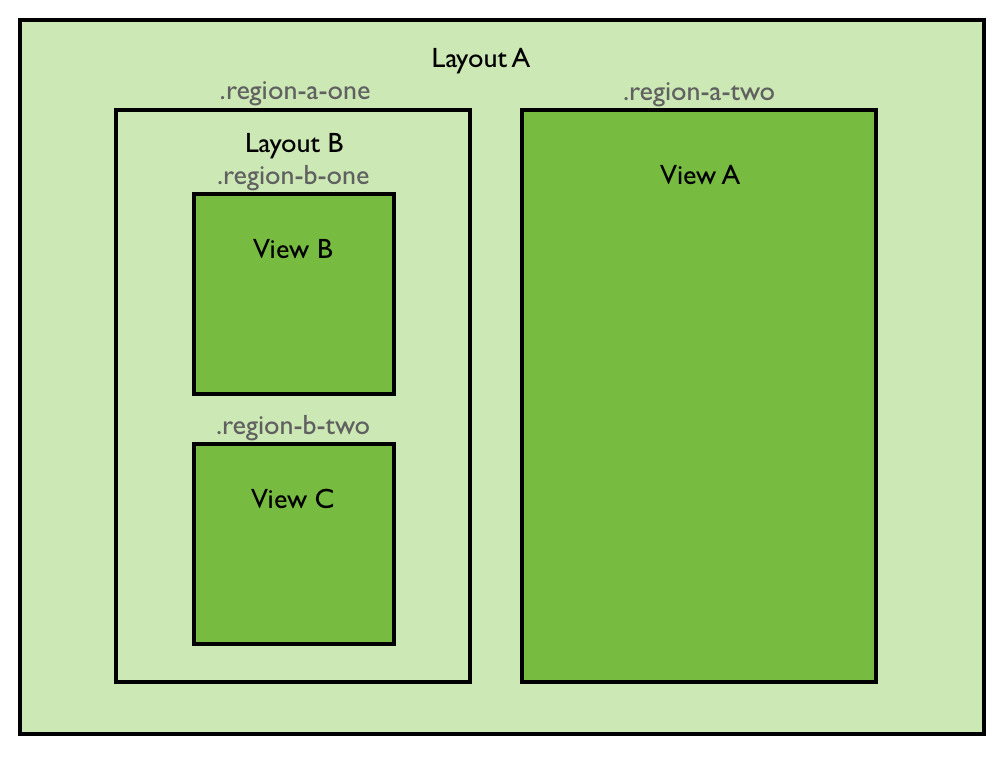Correct Uses of onShow and onRender in Marionette
For the past few months, I have been consistently stymied by Marionette’s built-in onShow and onRender methods.
In a single-page app, you often manipulate the DOM Tree instead of doing full page reloads. Marionette.js is a handy backbone library that provides a clean way to execute this manipulation in the form of its Layouts and Views. It is often convenient to know when a View’s DOM subtree has successfully been inserted into the DOM and is jQuery accessible.
This is where the onShow() and onRender() methods can come in handy.
What the docs say
onRender
“render” / onRender event
Triggered after the view has been rendered. You can implement this in your view to provide custom code for dealing with the view’s el after it has been rendered.
onShow
A region will raise a few events when showing and closing views:
“show” / onShow - Called on the view instance when the view has been rendered and displayed.
“show” / onShow - Called on the region instance when the view has been rendered and displayed.
This does not present us a full picture of why, when, and how we should use these methods.
What the docs should say
onRender
onRender() was a misleading term for me. “onRender”, I said to myself, “The sounds like it would be invoked when DOM elements have been rendered by the browser.”

onRender() gets triggered when the View’s DOM subtree is prepared for insertion into the DOM but before those elements are viewable. Putting code in the onRender function of your view will NOT guarantee that you will have jQuery access to these newly created elements.
onShow
The onShow() method is used in the context of Layouts and Regions. A Marionette Layout may have many “Regions” that will later be populated with sub-Views. These sub-Views are instantiated when a Layout invokes its region’s .show() method with the View to be rendered.
When .show() is invoked, the DOM subtree for that sub-View is constructed and inserted into the DOM. A “show” event then triggers any code in the onShow() methods in both the Layout and the sub-View.
Proper Use
Code in onRender() will be executed reliably every time this.render() is called by the view. You should include code that needs to be called every time you would update that View. onRender() does not assure you jQuery access to the View’s DOM elements. Code that relies on DOM elements should be in the onShow() method.
Code in in both the Layout and the sub-View’s onShow() methods will be executed every time someRegion.show(subView) is called by the Layout. The Layout may not call .show() every time you update that sub-View. Code that needs to be run on every rendering should be in the sub-View’s onRender().
Improper Use
The triggering of onShow() methods will behave unexpectedly if you do not handle handle nested .show() method calls carefully. Below is a diagram of a concrete example of deeply nested layouts and views that illustrate this:

Layout A Snippet
regions: {
regionAOne: ".region-a-one",
regionATwo: ".region-a-two"
},
onRender: function() {
this.regionAOne.show(LayoutB); // wrong
this.regionATwo.show(ViewA);
}Layout B Snippet
regions: {
regionBOne: ".region-b-one",
regionBTwo: ".region-b-two"
},
onRender: function() {
this.regionBTwo.show(ViewC); // wrong
this.regionBOne.show(ViewB);
}View C Snippet
onShow: function() {
this.$el.addClass("class-name");
}In this example, in View C we will run into a javascript error: cannot call addClass of undefined. But wait! Shouldn’t View C’s onShow() method only be invoked if View C’s DOM Tree elements are properly in the DOM?
We see this unexpected behavior because in the deeply nested layouts, rather than waiting for Layout B’s DOM subtree to be viewable, View C is instantiated in the onRender() method. We see the same in Layout A in regards to Layout B.
In this case the order of events is as follows:
-
Layout A comes into being (probably from a
.show()call by its parent. -
When Layout A’s DOM subtree has been constructed Layout B and View A are instantiated using regionAOne and regionATwo’s
.show()methods. -
When Layout B’s DOM subtree has been constructed View B and View C are instantiated using regionBone and regionBTwo’s
.show()methods. -
Layout A’s DOM subtree is visible in the DOM.
-
onShow()in Layout A, Layout B, View C, etc. are all triggered at the same time. -
Layout B’s DOM subtree is visible in the DOM.
-
View C’s DOM subtree is visible in the DOM.
Corrected Layout A Snippet
To ensure that each DOM subtree is inserted into the DOM before the onShow() method is called, move the region .show() code to the onShow() method of the Layout:
regions: {
regionAOne: ".region-a-one",
regionATwo: ".region-a-two"
},
onShow: function() {
this.regionAOne.show(LayoutB); // correct
this.regionATwo.show(ViewA);
}If you are unable to access jQuery DOM elements in an onShow() method, trace your way through your Layout/View hierarchy and find the culprit whose region calls .show() in a non-onShow() method.
